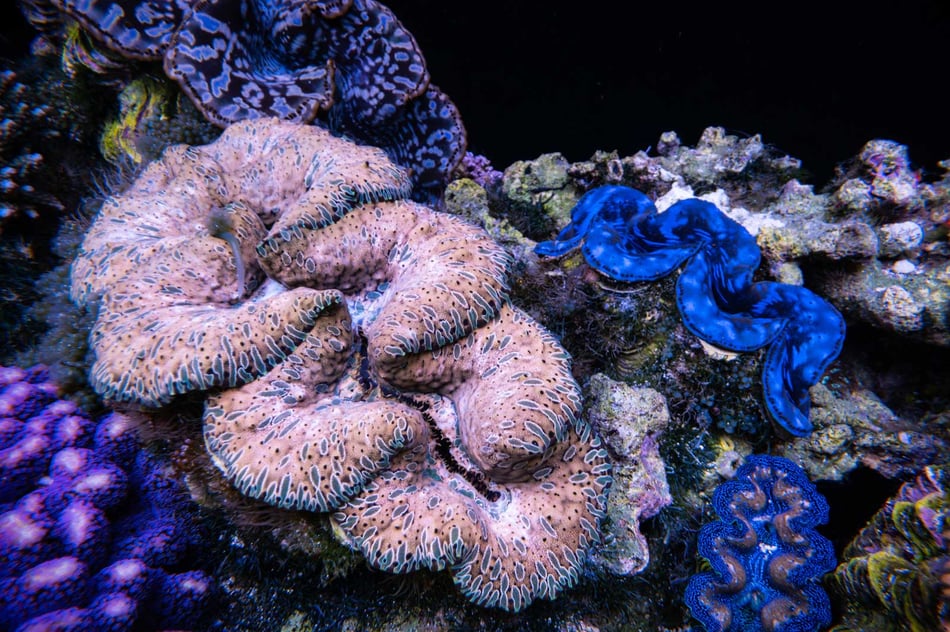IMARCS: Our vision going forward

Jordan
2
min. read

When we launched IMARCS, we envisioned utilizing the power of mariculture – a subset of aquaculture – to store and remove carbon in calcifying marine organisms, especially Tridacna giant clmas. This first-of-its-kind organization is also using these organisms – currently several species of giant clams – to improve food security in underserved areas throughout Asia and eventually to restore reef ecosystems that have been degraded, particularly those that once had thriving giant clam populations before degradation.
Our goal is to help create sustainable environmental solutions: for carbon removal, for a sustainable source of protein, and for ecosystem replenishment. Here's what IMARCS has done so far in its relatively short existence.
Our goal is to help create sustainable environmental solutions: for carbon removal, for a sustainable source of protein, and for ecosystem replenishment. Here's what IMARCS has done so far in its relatively short existence.
WHAT WE'VE DONE
We are proud to have realized a few key milestones and developments over the past several months. During this time, we have:
1. Completed our initial facility buildout
Our initial mariculture facility is nearing completion in Shiga, Japan, with expected facilities and operations in Singapore, Vanuatu, and possibly Belize to follow down the road.
2. Developed a partnership to help provide better food security and a sustainable source of protein.
We have forged a partnership with one of the largest giant clams farms in the world to make this sutainably sourced meat available for those who need it most. While this partnership is in the early stages, we hope to be able to expand on it in the near future.
3. Set a framework for increasing giant clam numbers.
Our ultimate goal is to enhance biodiversity through restoration of reefs, starting with giant clams and eventually including corals and other vital marine species. Getting to the point where we will be able to reintroduce these incredible creatures into reef environments is still a ways away, but through

WHAT WE ARE DOING NEXT
For the foreseeable future, there are three main areas of focus for IMARCS:
1. Begin independently-verified research on our novel approach to store carbon in giant clam shells.
We know that their shells store carbon in the form of calcium carbonate, which is pulled from surrounding waters. What is not known, by us or anyone else in the world, is whether this process can be considered carbon negative, meaning the carbon removed from the water is more than what is released by the organisms during their biological processes. This needs to be tested with varying water paremeters to see if higher pH levels or temperature affects precipitation of carbon in clams. We have begun this research with support from the University of Barcelona, and we hope to publish our findings in the sustainability-focused scientific journal IEREK.
2. Developing more partnerships
We know that their shells store carbon in the form of calcium carbonate, which is pulled from surrounding waters. What is not known, by us or anyone else in the world, is whether this process can be considered carbon negative, meaning the carbon removed from the water is more than what is released by the organisms during their biological processes. This needs to be tested with varying water paremeters to see if higher pH levels or temperature affects precipitation of carbon in clams. We have begun this research with support from the University of Barcelona, and we hope to publish our findings in the sustainability-focused scientific journal IEREK.
2. Developing more partnerships
As mentioned above, we have developed a partnership with one of the largest clam farms in Oceania to scale our efforts for reef restoration and to reintroduce giant clams into the areas that need them most. We plan to build on this to develop further partnerships in the near future.
3. Reef restoration and clam reintroduction
3. Reef restoration and clam reintroduction
When we have our carbon sequetration methodology validated by independant research, and we have streamlined the logistics for clam-driven food security, we can then begin our reef restoration and clam reintroduction programs. This is our ultimate goal as it will encapsulate our other efforts while helping to make the largest direct impact on ecosystems and marine reef environments .

WHAT YOU CAN DO TO HELP
The best way to help is to Support IMARCS in our vision for a more sustainable future through mariculture and marine science initiatives. You can also share our content, research, and website to increase awareness of our mission, or get in touch with us if you want to be a more integral part of what we are doing.